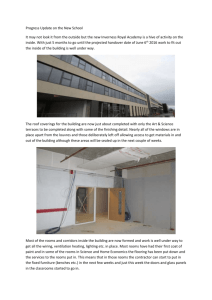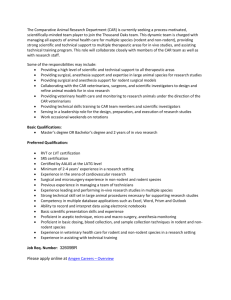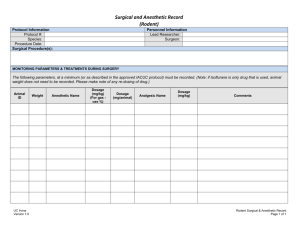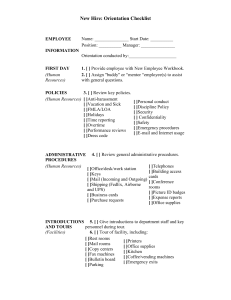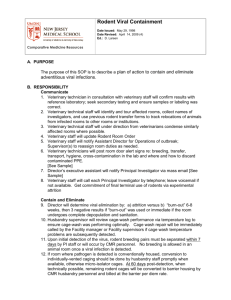Facility Overview: The UIC animal care and use program has
advertisement
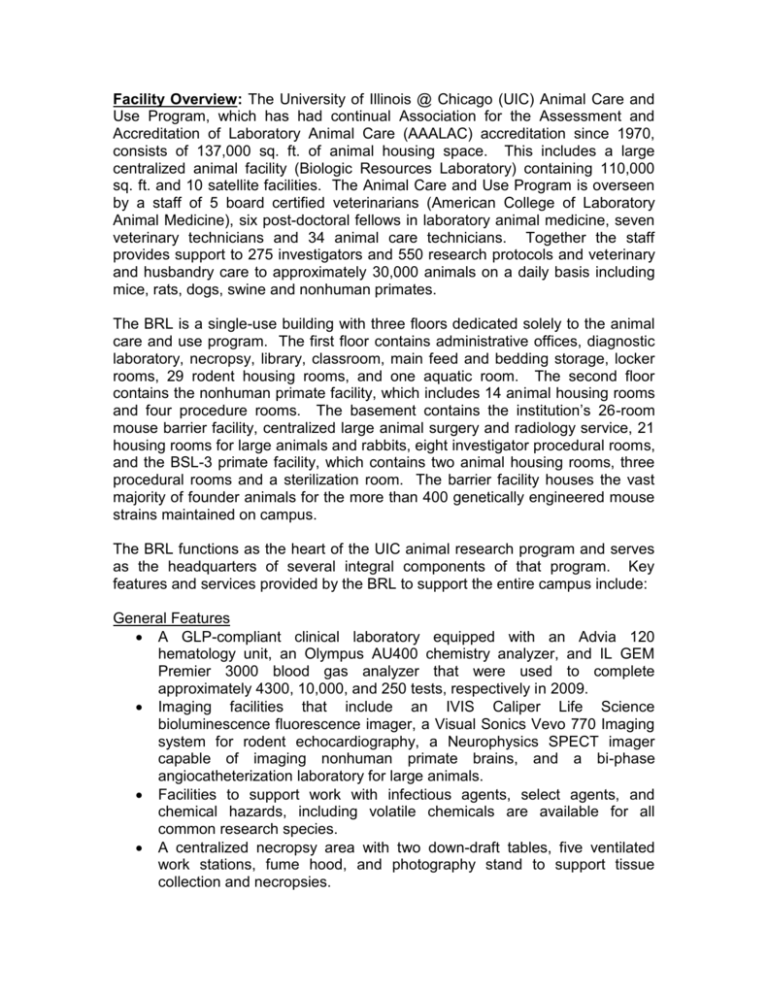
Facility Overview: The University of Illinois @ Chicago (UIC) Animal Care and Use Program, which has had continual Association for the Assessment and Accreditation of Laboratory Animal Care (AAALAC) accreditation since 1970, consists of 137,000 sq. ft. of animal housing space. This includes a large centralized animal facility (Biologic Resources Laboratory) containing 110,000 sq. ft. and 10 satellite facilities. The Animal Care and Use Program is overseen by a staff of 5 board certified veterinarians (American College of Laboratory Animal Medicine), six post-doctoral fellows in laboratory animal medicine, seven veterinary technicians and 34 animal care technicians. Together the staff provides support to 275 investigators and 550 research protocols and veterinary and husbandry care to approximately 30,000 animals on a daily basis including mice, rats, dogs, swine and nonhuman primates. The BRL is a single-use building with three floors dedicated solely to the animal care and use program. The first floor contains administrative offices, diagnostic laboratory, necropsy, library, classroom, main feed and bedding storage, locker rooms, 29 rodent housing rooms, and one aquatic room. The second floor contains the nonhuman primate facility, which includes 14 animal housing rooms and four procedure rooms. The basement contains the institution’s 26-room mouse barrier facility, centralized large animal surgery and radiology service, 21 housing rooms for large animals and rabbits, eight investigator procedural rooms, and the BSL-3 primate facility, which contains two animal housing rooms, three procedural rooms and a sterilization room. The barrier facility houses the vast majority of founder animals for the more than 400 genetically engineered mouse strains maintained on campus. The BRL functions as the heart of the UIC animal research program and serves as the headquarters of several integral components of that program. Key features and services provided by the BRL to support the entire campus include: General Features A GLP-compliant clinical laboratory equipped with an Advia 120 hematology unit, an Olympus AU400 chemistry analyzer, and IL GEM Premier 3000 blood gas analyzer that were used to complete approximately 4300, 10,000, and 250 tests, respectively in 2009. Imaging facilities that include an IVIS Caliper Life Science bioluminescence fluorescence imager, a Visual Sonics Vevo 770 Imaging system for rodent echocardiography, a Neurophysics SPECT imager capable of imaging nonhuman primate brains, and a bi-phase angiocatheterization laboratory for large animals. Facilities to support work with infectious agents, select agents, and chemical hazards, including volatile chemicals are available for all common research species. A centralized necropsy area with two down-draft tables, five ventilated work stations, fume hood, and photography stand to support tissue collection and necropsies. Rodents Rodents at UIC are specific pathogen free and maintained in sterile microisolator caging and all cages are changed in a laminar work station or biosafety cabinet. A rodent quarantine and rederivation program, which has rederived over 650 lines of mice since 2005. A rodent transgenic production service, which produces transgenic mice for investigators from UIC and neighboring institutions. Specialized housing such as suspended and metabolic cages available for investigator use. Fifty-three Illinois Cubicles within rodent housing rooms offer the ability to isolate small groups of rodents from the colony for a variety of purposes including placement on a reverse light cycle. Four isolator units holding up to six mouse cages each are available for the maintenance of gnotobiotic animals. A Data Systems International rodent telemetry core with eight receivers maintained by the department of cardiology. Large Animal/Experimental Surgery A centralized large animal surgery and radiology service. Typical surgical procedures include thoracotomy, laparotomy, implantation of telemetry and access ports, craniotomy, surgical exposure of various peripheral vessels for catheterization, and laparoscopic training. Five operating rooms, including one large room that can accommodate two to four surgical tables and anesthetic machines for multiple surgical cases, one room that contains five laparoscopic surgical stations for nonsurvival training, and one room that contains a DaVinci II robot for robotic surgical training. A cardiopulmonary bypass unit and fluoroscope are available for investigator use. Nonhuman Primates Capacity to house up to 350 macaques and baboons A BSL-3 nonhuman primate facility with the capacity to hold up to 28 macaques. The facility contains equipment to perform bronchoscopic infection, assessment, and collection of fluid samples.

